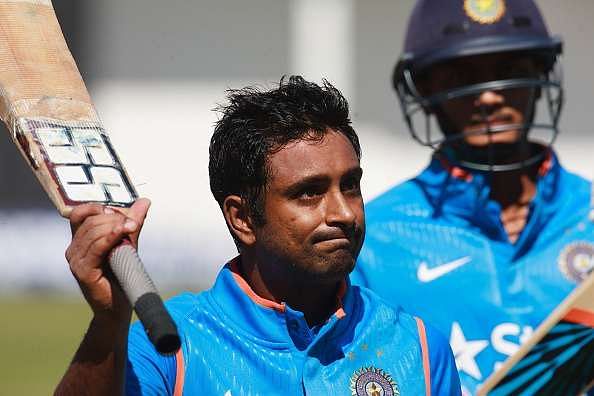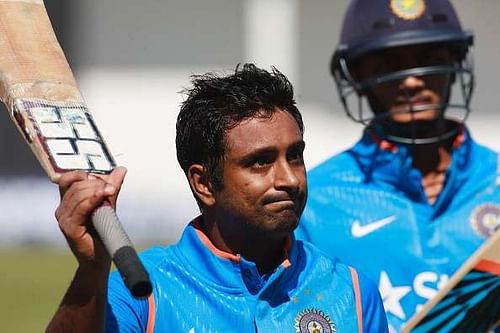
Ambati Rayudu: The man who refuses to give up
Iceland is a country with a population of just 323,002 people but is capable enough to send a contingent of 23 men to the UEFA Euro 2016, currently underway in France. India is a country of 1.25 billion people but has managed to qualify for the FIFA World Cup only once. The reasons behind this are innumerable and have a lot to do with the manner different sports, in general, are treated differently in the country. Cricket rules the country’s streets like no other sport does, but a country of over a billion people vying to play and follow a solitary sport doesn’t hold good either for the future of sports in the country.
Jeff Thomson, the legendary Australian fast bowler, while speaking to Sportskeeda on the amount of cricketing talent that India has, had opined, “In Australia, it’s quite different. We might be playing well nevertheless, but we aren’t so many. So getting noticed is easier there. Here, in India, there are so many people. Hundreds of thousands of cricketers who play and that makes getting noticed very hard in this country.”
Hence, it is abundantly clear that making it into the playing XI every time that the Indian Cricket Team takes the field is an astronomical probability, and retaining the places once you’ve beaten the odds is even sterner. Therefore, barring a few gifted men, who occupy spots of their choice in the line-up, the Indian Cricket Team resembles the refugee camps in Europe currently being overwhelmed by the influx of refugees from war-torn nations, at least in terms of ‘places for all,’ and there is nothing much that the players can do, apart from persevering.
Several cricketers, on the back of brilliant domestic performances, have earned their national call-ups but have either warmed the bench before being shown the door unceremoniously or have played in second-string teams – such as the one participating in Zimbabwe at the moment – and have never been picked for the full-strength squad despite their impressive performances. Names like Kedar Jadhav, Murali Vijay, Gurkeerat Mann and Manoj Tiwary spring to mind amongst the current crop of Indian cricketers, but one man who has stood apart, at least in terms of breaking into the main side and laying a substantial claim for his spot, has been Ambati Rayudu.
Humble beginnings
What makes Rayudu’s journey all the more remarkable is the fact that it took him 10 arduous years from the moment he made his debut in competitive cricket – in 2002-03 – to make his international debut for India – at the age of 27, in 2013 – and the road was laden with a series of disappointments. He was touted as a young prodigy after he smashed an unbeaten 177, at the age of 16 in 2002, to help India U-19s beat England U-19s after being down and out at 137/6 while chasing 304.
In the following Ranji Trophy season, in 2002-03, the right-handed batsman became the youngest batsman to score a century and a double century in the same match in the history of the Ranji Trophy, when he made 210 and 159* playing for Hyderabad against Andhra. Rayudu finished as the third highest run-getter of the tournament, plundering 698 runs at an average of 69.80.
With his prowess as a top-order batsman already been established, Rayudu was given the reigns of the Under-19 team in for the ICC Under-19 Cricket World Cup in 2004, after he had successfully led the Indian colts to the title victory at the Asia Under-19 Tournament, held in Pakistan in 2003. The Under-19 World Cup of 2004, held in Bangladesh, in some ways, proved out to be both, the zenith as well as the nadir of Rayudu’s short career.
Although India finished as one of the semi-finalists in the tournament, Rayudu’s form with the bat dipped – as he averaged just 24.83 with the bat – and could manage only 155 runs at 11.92 in the following Ranji Trophy season. The poor show with the bat was worsened by Rayudu’s deteriorating relationship with the then Hyderabad coach, Rajesh Yadav, something that saw him make the move from Hyderabad to Andhra – in 2005-06 – a move that backfired, as the Guntur-born batsman could boost his batting average to only 35 that season. He returned to Hyderabad in the following year, in 2006-07 but averaged only 21 with the bat after suffering a knee injury midway through the tournament.
Tryst with the ICL
Thus, at 21, in 2007, Ambati Rayudu’s hopes of making his India debut were in dire straits, and it was perhaps the nonchalance of the youth or the lure towards the acknowledgement of his talent on a worldwide basis that led him to his association with the now-defunct - and once the thorn in the BCCI’s eye - Indian Cricket League. “I didn't want to play ten years of domestic cricket and feel that I have not played any international quality opposition,” Rayudu had remarked on his association with the Hyderabad Heroes of the ICL, in 2007. “(It is a chance) to play against quality opposition for three years and it will also be telecast on TV. People will hopefully see me perform. And I want to perform for my own personal satisfaction,” he added further.
As ambitious as his plans were, they were not there to save him from the wrath of the ruling governing body of the sport, as Rayudu as well as all other cricketers who participated in the ‘rebel’ league were banned from participating in domestic cricket. Hence, at a time when players lesser than his age – such as Rohit Sharma – were revelling in the World T20 glory, Rayudu had decided to tread on uncharted waters with his future looking as bleak as that of a ship at sea on a stormy evening. If Rayudu’s ambitions had taken him astray, the BCCI’s ambitions brought him back on track.
In 2009, the board offered an amnesty proposal to all the rebel cricketers and allowed them to return to competitive cricket. Rayudu, along with 79 other Indian players were thenceforth given a lease of life and the gritty Indian batsman was determined to make the most of it. Finally, after 8 years of struggle in the domestic arena, the world saw the first glimpse of the man, much to the youngster’s desire, when he appeared for the Mumbai Indians in the third season of the Indian Premier League (IPL) in 2010.

